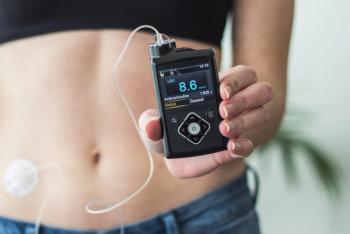
- Drug Topics June 2020
- Volume 164
- Issue 6
Experts Examine the Many Factors of Pharmacist Burnout
“Are employers really stepping up to take care of their health providers? I think [that] is something that also probably needs to change.”
Professional burnout among pharmacists, already a growing concern in the United States, could be exacerbated by the coronavirus disease 2019 (COVID-19) crisis. The current pandemic strains pharmacy capacity and exposes persistent underlying problems, according to 3 experts on pharmacy burnout.
A national survey of more than 4700 pharmacist concluded that, although more than half (54.2%) of respondents reported meaningful work, 32% and 33% also said they felt “a lot” or “totally” emotionally and physically exhausted. Community pharmacists demonstrated higher rates of work exhaustion and interpersonal disengagement, as well as lower levels of professional fulfill- ment, compared with those practicing in hospitals and other work settings. A poster showing the results was pre- sented in the 2020 American Pharma- cists Association (APhA) Virtual Poster Hall Gallery.
In a video interview with Drug Topics®, study coauthor Matthew Witry, PharmD, PhD, noted the 3 predominant factors of burnout:
- Physical and emotional exhaustion
- Depersonalization
- Autonomy/personal accomplishment
Along with already slumping pharmacist retention rates and closing pharmacies, the pandemic puts immense pressure on the health care profession, as pharmacists work tirelessly to support their patients and communities.
The survey findings also suggest that larger pharmacy chains should emulate independent pharmacy workplaces to improve fulfillment and lower levels of exhaustion.
“We saw lower scores for a sense of control at work in those corporate settings, which isn’t surprising, since there is more of a corporate structure with a lot of those retail environments, where a lot of those decisions are getting made at higher levels of management,” said Witry, an assistant professor in the Department of Pharmacy Practice and Science/Division of Health Services Research at The University of Iowa College of Pharmacy in Iowa City.
Findings from a separate survey conducted by the National Pharmacy Technician Association showed that most chain and mass retail pharmacy technicians do not feel safe at work during the current pandemic, with just 26.1% reporting feeling safe compared with 63.8% of independent pharmacy technicians.
Caroline Gaither, PhD, FAPhA, coauthor of the study presented at APhA, senior associate dean of the Professional Education Divisions, and a professor in the Department of Pharmaceutical Care and Health Systems at the University of Minnesota College of Pharmacy, agreed that chain pharmacies may be experiencing more acute levels of burnout amid the pandemic.
“The corporate-owned chain environment in particular is really suffering related to their satisfaction. The workload has increased very much, and we’ve been looking at that, as well,” she told Drug Topics®. “They’re telling us that the workloads have gotten higher and the staffing has decreased, and that has increased their feeling of job stress and also influenced their satisfaction levels.”
The survey results linked burnout in all domains with the likelihood of leaving one’s position, suggesting that reducing burnout could help promote pharmacist retention, according to the authors.
As the pandemic intensifies burnout factors, pharmacy closures in both rural and metropolitan areas in recent years, as well as discussions of pharmacy benefit managers cutting reimbursements, compound the issue.
“If anything, this pandemic has made us think about the importance of access. Having pharmacies where we need them is important,” Witry said.
Jon Schommer, MS, PhD, RPh, also a study coauthor and a professor in the Department of Pharmaceutical Care and Health Systems at the University of Minnesota College of Pharmacy, encouraged scrutinizing workplace conditions during the pandemic.
“In addition to burnout, which is something that you would like to avoid, we also do research in the area of what’s called well-being,” he told Drug Topics® in a video interview. “And that’s being able to have constructive conditions at work and beyond, even in your personal life, that enable workers to thrive and achieve their full potential.
“Part of that also is something called resilience: the ability of a person or a group of people or even a system to adapt and rebound and even grow from adverse conditions, stress, or trauma,” he continued. “When you think of this COVID-19 situation, we’re all also keeping an eye on work conditions that will support resilience. Can you actually grow and take advantage of very stress- ful and difficult situations?”
Gaither discussed the National Academies of Science, Engineering, and Medicine’s explanation of clinician burnout, which includes 2-pronged influences. On 1 side are the frontline workers and health care providers working for a particular health care organization that has varying policies and procedures, whereas the other side determines work system factors, including job demand, workload, and the number of work hours.
“If there’s a good balance there, then the health providers are able to really thrive and do the work, but when the job demands become too high, that’s where you can get into some of the more negative consequences,” Gaither said.
“Now, the other piece of that is, they say that these work system factors are also influenced by the individual-so, how much resilience that person has, their ability to cope with adversity, and also how much their work interferes with their personal life,” Gaither continued. “I really like the model, because they’ve started to talk about the system factors that are beyond what the individual provider is able to contribute and that the burnout is not necessarily related to some kind of individual failure, but it’s really related to kind of the way the work environment is structured.”
A contributing factor to burnout, according to Schommer: Community pharmacy practice is increasingly pressuring pharmacists to conveniently and quickly distribute medications.
“We’re finding that in community pharmacy practice, the distribution of pharmaceuticals is so vital, and you have to have that pressure on you all day long to be as efficient as possible. At the same time, community pharmacies are being recognized by the public by government agencies, such as CDC [the Centers for Disease Control and Pre- vention]...as health care access points, that you can get vaccinations, immunizations, screenings, and point of care testing,” he said. “There are a lot of patient care and public health services that are being provided.”
The experts put forth the idea of moral injury, in which health providers pursue their responsibilities but face constraints within their organization that affect their well-being and ability practice at their best.
Pharmacists remain eager to take on more responsibilities, according to Witry. “Pharmacists are probably feeling really appreciated. They’re making a difference-getting that care to people, being that access point, answering important questions, being a source of care,” he said. “When people aren’t going to their primary care physician appointments, they can still call their pharmacist or they can still talk to the pharmacist across the plexiglass.”
However, issues within the health care systems must be addressed so that pharmacists can do their job and avoid burnout.
“Do the pharmacists feel that their employers kind of have their backs? Do they feel supported? Are employers really stepping up to take care of their health providers? I think [that] is something that also probably needs to change,” Gaither said. “And then this idea of the profit motive in health care- there’s a lot of things that we could do better with if we had more resources and more reimbursements...to really provide patient care.”
Articles in this issue
over 5 years ago
Barhemsys (Amisulpride) for Postoperative Nausea and Vomitingover 5 years ago
Adapt to a “New Normal” During Uncertain Timesover 5 years ago
No Good Deed Goes Unpunishedover 5 years ago
Pharmacies Can Take Steps to Protect Against Cyberattacksover 5 years ago
Offer Patients OTC Pointersover 5 years ago
Keep Current on Vaccines to Reassure Hesitant Patientsover 5 years ago
Get Educated on Diabetes Devicesover 5 years ago
Pharmacists Fight HIVNewsletter
Pharmacy practice is always changing. Stay ahead of the curve with the Drug Topics newsletter and get the latest drug information, industry trends, and patient care tips.




































































































































